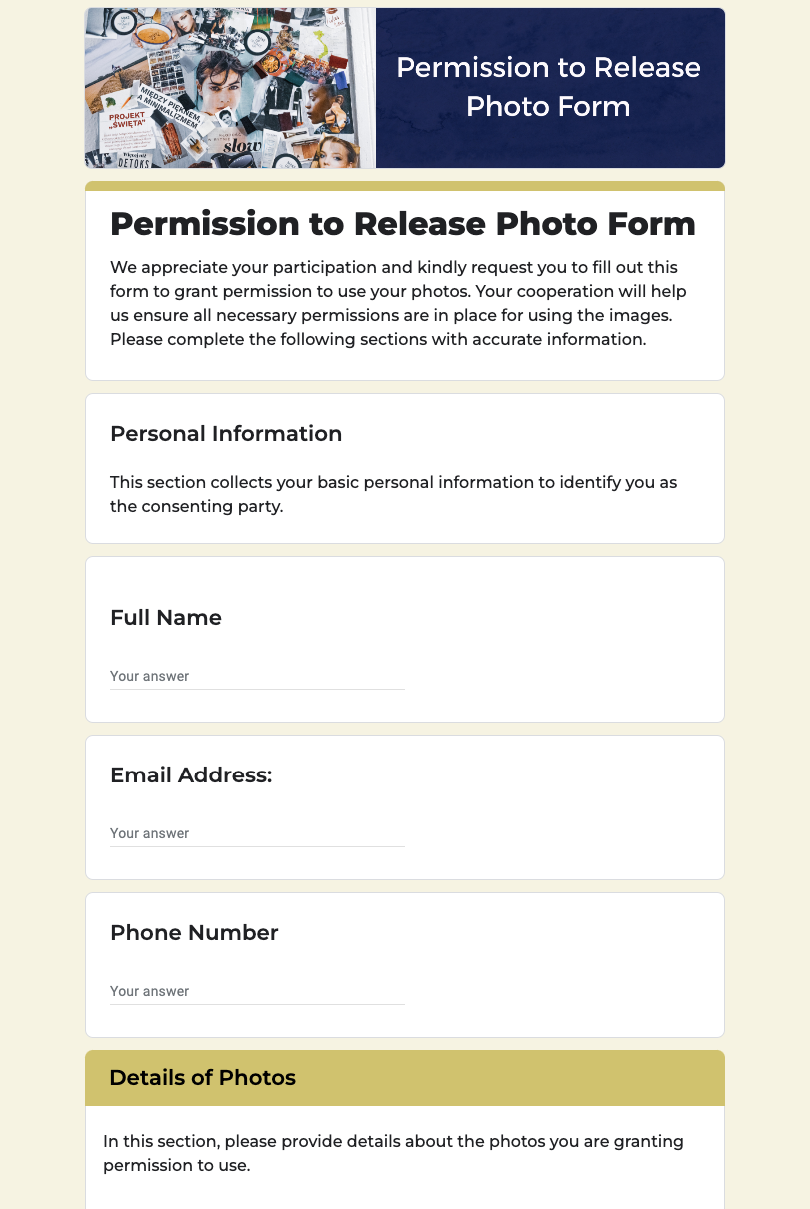Permission to Release Photo Form
FREE
A Permission to Release Photo Form is an essential tool that protects your rights while allowing you to share photos legally and responsibly. This form ensures that you have clear, written consent from individuals before using their images in marketing, social media, or any public platform. By using this form, you avoid potential legal issues and build trust with those who are photographed. It’s an easy, straightforward way to secure the necessary permissions, giving you peace of mind and confidence to use photos without hesitation.



